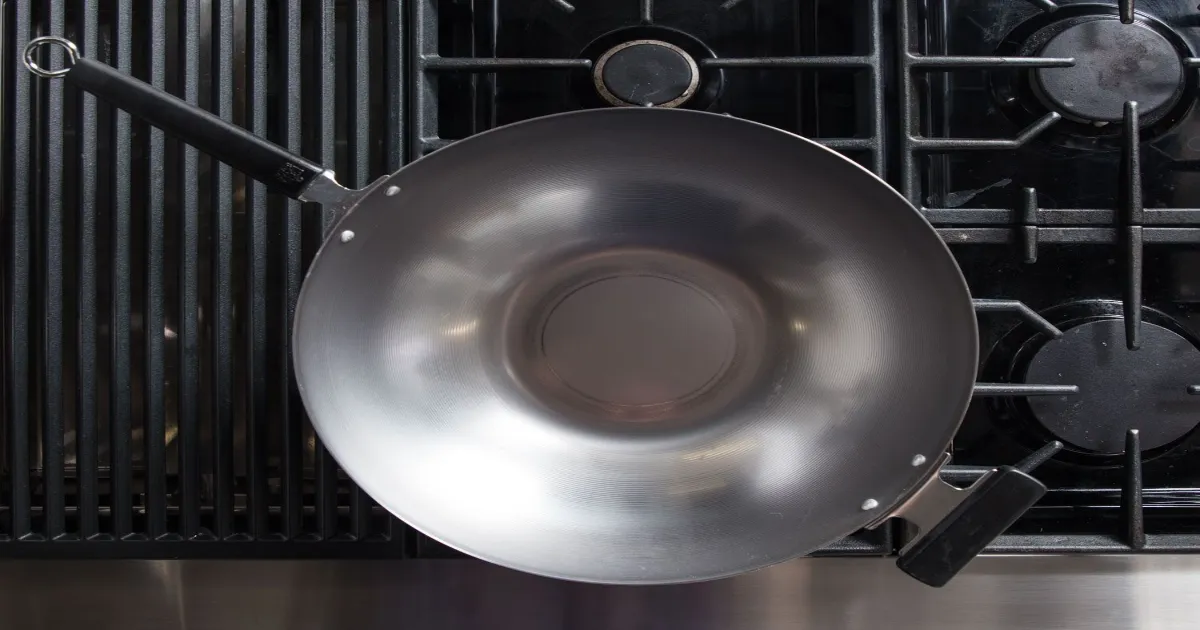Do you love stir-frying but don’t have a wok? You can easily season wok in oven for the best results. You only need an oven-safe baking dish or pan and some aluminum foil. Follow these simple steps to get that perfect flavor and texture for your next stir-fry dish.
Step-By-Step Instructions For Season Wok In Oven
[amazon bestseller=”wok” items=”10″]
Remove the wooden handle from the wok by unscrewing it. Because there may be slight rust between the wok and the handle, the handle may need to be jiggled a bit. Place the wok inside the sink and fill it with hot water until it reaches the outside border on the opposite side. Allow for 30 minutes of resting time.
Pour off the water, add the detergent, and clean the wok for 10 minutes using a stainless steel sponge. Rinse the wok well with hot water to remove any remaining detergent and the manufacturer’s oils. Place the wok in an oven that has been prepared to 500 ℉ (260 degrees Celsius) upside down.
Bake for 1 hour to burn off any leftover manufacturer’s oil that may still be on the wok’s surface. Remove the wok from the oven and allow it to cool naturally. It will take 1-2 hours to complete this task. Using a stainless steel scrubber and hot water, scrub the wok, then rinse & dry on the burner. Apply a tiny quantity of oil to the interior and outside the wok after it is dry yet not too hot.
Once you’ve ensured that every part of the wok has been oiled, wipe it down with a paper towel until it appears and feels clean. Place the wok upside down in an oven warmed to 30 degrees Fahrenheit above the smoke point of the oil. Bake for 60 minutes, then turn off the oven and allow the wok to cool naturally, as described above.
Optional step: I scrubbed the wok with a light scrape and hot water, then repeated steps 8-10, even though you shouldn’t have to. The wok is now ready for fragrant seasoning. Heat your wok at low-to-medium heat, add 2 TBS high-smoke-point frying oil and wait for it to heat up.
Add a few thinly sliced fresh ginger, 1 big diced yellow or red onions, 5-7 green onions, and 1-2 inch pieces of Chinese chives. Stir-fry, occasionally moving the veggie combination with a spatula along the bottom and edges of the wok until the aromatics begin turning brown but never become scorched.
It’s worth noting that using a metal spatula may leave some scuff marks on the wok’s surface, particularly near the bottom. There’s no need to be concerned, but if you want to avoid them, use a wooden spatula. Remove the vegetables from the pan and wipe them off with a paper towel.
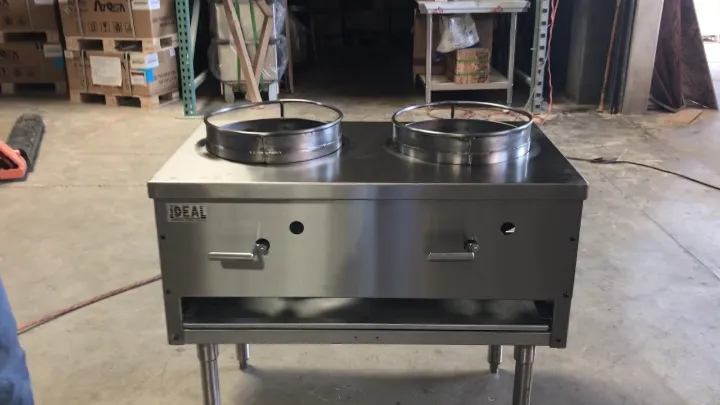
In the future, you might wish to invest in a bamboo whisk to remove food that has become stuck to the wok’s surface. As a side note, there should be no metallic flavor left inside the aromatics (I can’t spot any in the vegetables or the egg I cooked afterward). The wok has become ready for the first amazing stir-fry of your life.
Congratulations! You’ve completed the seasoning process, and your wok is ready to use. When properly cared for, it will last for generations.
Season Wok In Oven: The Importance
Knowing how to season it properly is essential if you have carbon steel or cast iron wok. Seasoning your wok regularly can lengthen its life and increase its performance. Seasoning a piece of cookware entails covering this in a thin layer of heated and polymerized oil. The polymerization process transforms the oil from a liquid to a protective shell that covers the wok and makes it slippery.
It will rust fast when a cast iron or carbon steel wok is exposed to dampness without being seasoned. Seasoning offers the equipment a nonstick surface and a protective layer. Stir-frying inside a wok is especially important because meat and vegetables require a smooth surface to avoid sticking.
Finally, pans that were seasoned regularly will absorb the aromas of your food over time. This will season new recipes and give them a particular flavor.
When It Has Been A Long Time Since You Have Used Your Wok
Have you ever bought a carbon steel wok and quickly forgotten about it? Mine is always on the burner, ready to cook steam buns and eggs, create scallion pancakes, and even toast some bread. However, it’s a little worse for wear after a lengthy period of inactivity. Woks, on the other hand, are more adaptable than they appear.
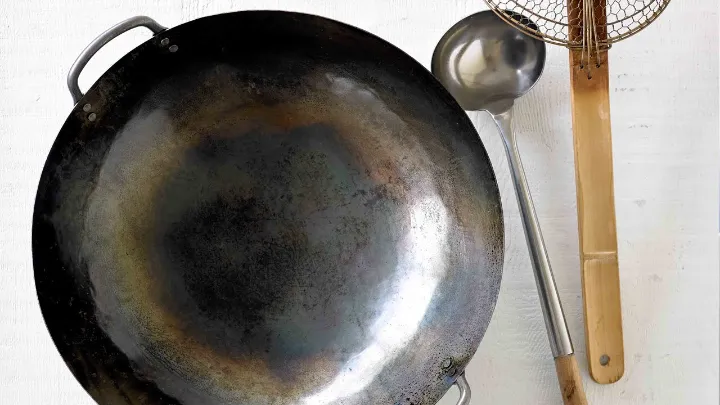
I am here to help you dust off your Chinese home cooking skills and get into the groove. So, here’s what you need to do to bring your wok back to life:
- When you’re done cleaning your wok, set it aside to cool.
- Scrub any residue off with a pot scrubber and then give the surface one more light rinse before drying over high heat while watching that there is no smoking or burning.
- Warm the wok over low heat and add one tsp of oil, spinning it around to distribute the oil evenly. Turn off the heat.
- Spread the oil over the whole inside area of the wok with a paper towel, whereas the wok has still been heated. There must be no oil left behind.
- The wok is now ready to use again!
A wok’s bottom can rust. Scrub the wok to eliminate the surface rust, then wipe it off with a paper towel dipped in a few oil droplets. In general, frequent use of wok and warming this to a high enough temperature can avoid rusting exterior, but be careful to warm the wok after each use to dry the interior and outside. If your wok is already rusty, don’t worry! You can still use it.
Just make sure to scrub off all the rust before you begin cooking. If your wok is non-stick, you don’t need to season it. If it’s not, you’ll need to season wok in oven before using it.
[amazon bestseller=”gas range oven” items=”10″]
Keeping Your Wok In Good Shape For A Long Time
Plan to use the wok at minimum three times per week for the first couple of months. You could cook an egg in it. If you’re cooking dishes in the wok, wash them after each usage. (I don’t steam.) The wok’s seasoning develops over time as it is used more frequently. Expect the wok’s color to vary. You’ll grow a magnificent adult wok that will be a worker in your kitchen throughout time.
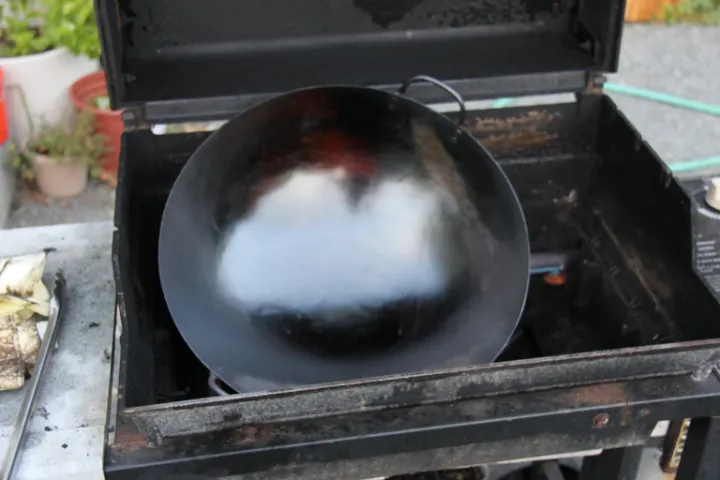
As previously said, season wok in oven regularly is necessary to keep it from rusting. A decent aim to set for yourself is to season your wok every three months, applying at least two coats each time. This will assist in reducing the amount of wear and tear caused by regular use. If you observe any damage to your wok’s surface, you should also season it.
Deep scratches may expose the metal interior of your pan, resulting in corrosion a couple of times. If the rust isn’t removed, it will spread and compromise the wok’s structural integrity.
How To Clean A Season Wok In Oven
Understanding how to clean a seasoned wok is important to maintain it. Inadequate cleaning can undo all the hard work in a couple of moments, exposing your cookware. Fortunately, the procedure is straightforward; you just need to know a few basic dos and don’ts. Abrasive scrubbers and cleaning chemicals that are more powerful than mild soap should be avoided.
Because the wok’s nonstick surface won’t rapidly crust with food, you’ll probably just need a tiny quantity of heated water to clean it. It’s critical to remember to dry the wok after rinsing it fully. This may be done by heating this over a high heat source. When cool, apply a layer of oil to your wok and store it.
How To Repair A Rusted Wok
Rust may have already harmed your wok in certain circumstances. Whatever the reason, the rust must be completely removed before reseasoning can begin. If you don’t do so, the rust will spread. If there is only a little rust, an aggressive scrub pad will generally remove it. Simply soak the wok in water and massage it carefully to remove the rust.
Steel wool and anything else that might harm the metal should be avoided. If you can’t readily eliminate the rust, or if the rust has compromised the wok’s structural integrity, it’s time to toss it. Buy a new one and start over.
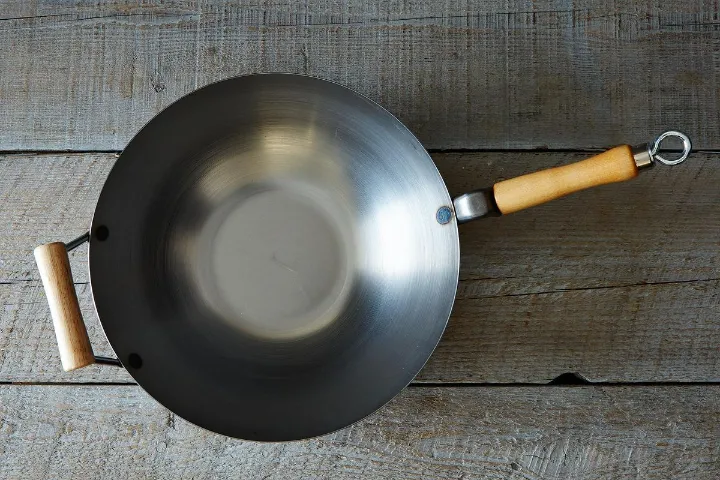
Types Of Woks
The wok dates back over 2,000 years, when the iron has become the most common cooking utensil. It was given a lid during the Yuan Dynasty and became a typical home culinary item.
Wok Made Of Carbon Steel
For Asian-style cooking, the carbon steel wok is a must-have utensil. A wok’s broad form makes cooking big food portions easier while stir-frying, pan-frying, stewing, and steaming. The concave design of the pan also makes it great for searing meat, resulting in a lovely smoky char.
Carbon steel woks are ideal for cooking since carbon steel is a material that uniformly distributes heat throughout the pan’s surface. To make cleaning easier, they might be coated with a nonstick coating. It’s critical to hand-wash carbon steel cookware rather than using a dishwasher. If you take care of your carbon steel wok, it will last for years and become more seasoned each time you use it.
With proper seasoning, a carbon steel wok can develop a smooth, nonstick surface perfect for cooking.
Wok Made Of Stainless Steel
The stainless steel wok would be a Chinese stirring fry pan with two looped handles and a circular bottom. It’s mostly used in Asian cuisine to make savory foods like chow mein, chow fun, fried rice, bak mein, chow yuk, and other cuisines. Stainless steel woks have advantages, although they are often less costly than their metal counterparts.
Stainless steel is a versatile material that can endure high temperatures, making it suitable for various cooking methods and foods. It’s also non-reactive so that it won’t rust or stain. Stainless steel is a good choice if you’re looking for a durable and affordable wok. Keep in mind that it doesn’t conduct heat as well as other materials, so it’s important to use a high flame when cooking.
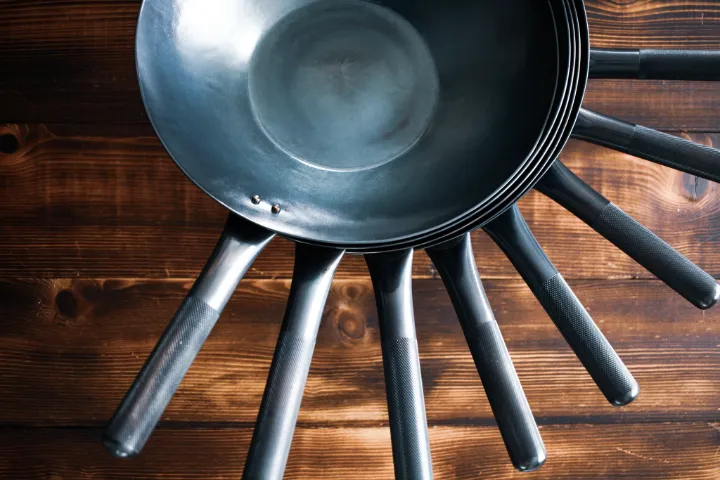
[amazon bestseller=”frying pan” items=”10″]
It’s also not ideal for stir-frying delicate ingredients like fish or vegetables, as they can stick to the surface.
Wok Made Of Cast Iron
It’s no surprise that a cast iron wok is such a versatile piece of culinary equipment that it’s been a mainstay for generations! The cast iron wok would be a circular pot that may be used to cook instead of a saucepan. Its rack-style handles may hang on a hook when not in use. The cast iron wok would be required for Chinese or Thai cuisine.
It’s great for deep-frying and stir-frying since it’s quick and easy, requires less oil, and ensures that nothing burns into the wok, making it easier to clean than nonstick pans. High heat is the simplest technique to cook in a wok. Always have the lid ready when cooking over high heat. Cooking spray should be avoided since it makes it difficult to manipulate the food.
While using a wok, you must never fill it. Cooking with little metal allows you to better handle your food without putting it into boiling oil or water.
Useful Hints For Using A Wok
- The wok’s form allows the chef to toss stuff from side to side without spilling anything out the sides.
- Stir-frying is a breeze with it.
- Always have the lid ready when cooking over high heat.
- Because of its large form, a wok may also be used as a steamer.
- It immediately warms up and holds heat effectively.
- It may be used over a fire, on the cooktop, or a hot plate.
- It’s flexible and robust cookware that may be used to transmit heat over meals uniformly.
- While using a wok, you must never fill it.
- Cooking spray should be avoided since it makes it more difficult to manipulate the food while stir-frying.
- It may be used to stir-fry as well as to braise foods.

Keys To Keeping A Seasoned Wok
- You may need to wash & heat the wok again if you have cooked a strong cuisine (for example, seafood or a curry dish). Heat aids in the removal of lingering flavors from the wok. Nothing is more unpleasant than preparing a lightly seasoned meal and then eating the fish you prepared the night before.
- If you’re not using the wok in a while, you should wash it before using it again. This is a matter of common sense. If you notice a rusty patch on the wok, likely, you didn’t heat this long enough to evaporate all of the moisture or didn’t wash it off with enough oil. Take note of these two crucial measures!
- Never, ever, ever, ever put the wok inside the dishwasher!
- After a simple steaming, always wash the wok after frying and wipe it off with vegetable oil.
- Wash your wok right after cooking using vinegar or other acidic substance. Any acid will eat away at the wok’s patina. Use a stainless steel pan or a saucepan to make hot and salty soups or meals like sweet and spicy pork, sweet and savory fish, and Peking spare ribs.
- If you see any accumulation or your wok is showing signs of wear, you may re-season it at any time by following the instructions outlined above for a fresh wok.
Differences Between Season Wok In Oven Versus On The Stovetop
When it comes to seasoning a wok, there are two main methods: seasoning on the stovetop or seasoning in the oven. Although both methods will result in a seasoned wok, there are some key differences between the two that you should be aware of before deciding which method to use.
The seasoning on the stovetop is the more traditional method and is generally considered the better option. The main reason for this is that it allows you to control the heat more easily, which is important when trying to get an even coating of oil on the wok. On the other hand, seasoning in the oven is a bit more hands-off and can be less messy.
If you’re seasoning your wok on the stovetop, you’ll need to heat it over a medium-high flame until it’s quite hot. Then, add some oil (peanut oil is generally considered the best option) and use a paper towel or brush to coat the wok’s surface evenly. Continue cooking the wok for about 15 minutes, adding more oil as necessary.
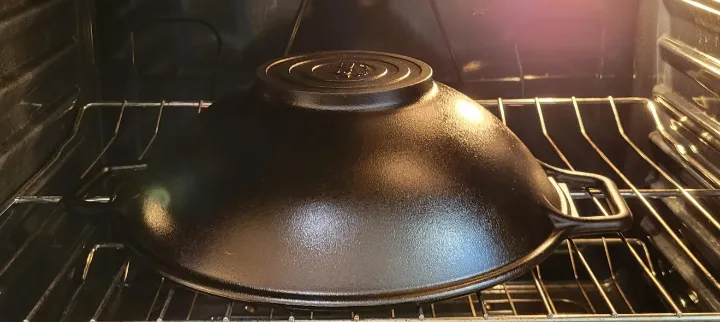
Once the time is up, remove the wok from the heat and allow it to cool completely before using it. Seasoning in the oven is a bit simpler: just preheat your oven to 350 degrees Fahrenheit, then place your wok on the middle rack.
Next, add some oil (again, peanut oil is best) and use a paper towel or brush to coat the wok’s surface. Cook for about an hour, then turn off the oven and allow the wok to cool inside.
Season Wok In Oven: FAQs
Take some time to study these frequently asked questions if you still have additional questions about the seasoning process.
How long does it take to season a wok in the oven?
Seasoning a wok in the oven should take about 1 hour from start to finish. The actual process of seasoning the wok will only take a few minutes, but you’ll need to allow time to preheat the oven and cool down the wok before use.
[amazon bestseller=”cooking oil” items=’10”]
Why does my wok have a sticky mess on it?
When seasoning a wok, home chefs make the most basic mistake of using too much oil. Instead of a smooth, slick surface, this will end in sticky spots or streaks. When seasoning, it’s critical to apply the oil as thinly as possible, so it is nearly undetectable. If your wok develops a sticky residue after seasoning, you’ll have to wash it off and start the seasoning procedure completely.
How can I know whether my wok is properly seasoned?
This might not be clear if a wok was already seasoned to individuals who haven’t undergone the procedure. Fortunately, there will be a few obvious signals that might give you an answer to your inquiry. Check for an iridescent, dark patina on the cooking surface if you use carbon steel. As the pan is used, the patina will become darker over time.
The difference in color between seasoned and unseasoned carbon steel should be noticeable. Cast iron is generally dark-colored, so it may not be as noticeable when you buy it. Check for a glossy sheen on the pan’s surface, indicating seasoning.
What happens if my wok isn’t properly seasoned?
A carbon steel or cast iron wok pan’s only protection against rust is layers of seasoning. Rust will gain traction without seasoning and damage the pan together in a couple of days. If you don’t season your wok, you’ll rapidly convert a good piece of equipment into a useless metal scrap.
Aside from that, any meal cooked in an unseasoned pan will adhere to the pan’s surface. Iron, a porous metal, does not provide a pleasant cooking experience.
Is a stainless steel wok need to be seasoned?
Wok pans made of carbon steel and cast iron are the only ones that must be seasoned. Woks constructed of aluminum, stainless steel, and other materials do not rust.
Conclusion
| No | Name | Image | Details |
| 1 | [amazon link=”B08B42GHRW” /] | [amazon fields=”B08B42GHRW” value=”thumb”] | [amazon fields=”B08B42GHRW” value=”button”] |
| 2 | [amazon link=”B08WX254FR” /] | [amazon fields=”B08WX254FR” value=”thumb”] | [amazon fields=”B08WX254FR” value=”button”] |
| 3 | [amazon link=”B00421AYKE” /] | [amazon fields=”B00421AYKE” value=”thumb”] | [amazon fields=”B00421AYKE” value=”button”] |
| 4 | [amazon link=”B09LLY92B7” /] | [amazon fields=”B09LLY92B7” value=”thumb”] | [amazon fields=”B09LLY92B7” value=”button”] |
| 5 | [amazon link=”B081K3XJJ8” /] | [amazon fields=”B081K3XJJ8” value=”thumb”] | [amazon fields=”B081K3XJJ8” value=”button”] |
Season wok in oven is important in ensuring that your cooking experience with this utensil is positive. Following the simple dos and don’ts, I’ve outlined can avoid common mistakes and make the process easy for yourself. If you’re still unsure about how to season your wok, or if it’s already rusty, check out my FAQs for more information. With proper seasoning, your wok will last for many years to come!

Jen Lin-Liu is the founder of Black Sesame Kitchen. A Chinese-American writer and a nationally certified Chinese chef in Beijing. Jen is the author of two memoirs, Serve the People: A Stir-Fried Journey Through China and On the Noodle Road: From Beijing to Rome with Love and Pasta.

